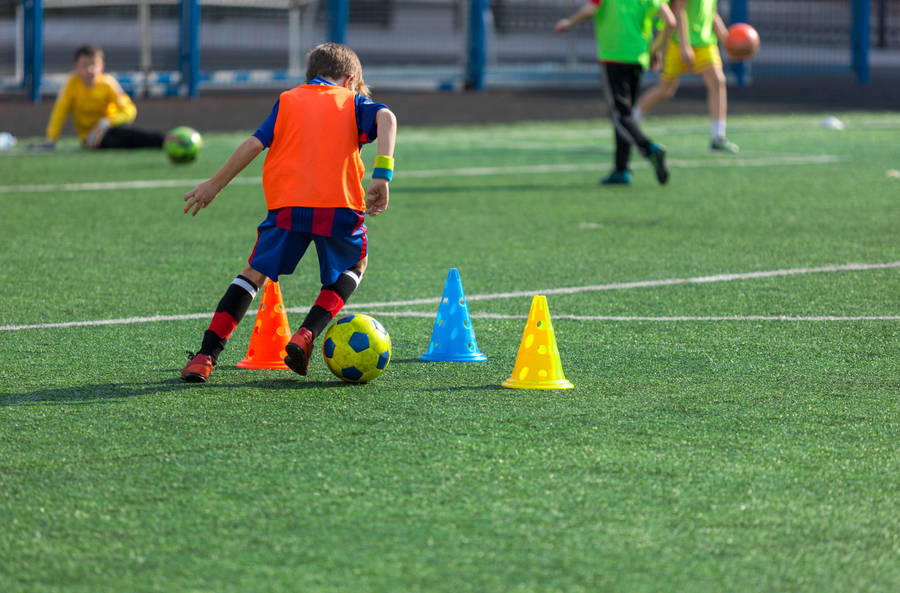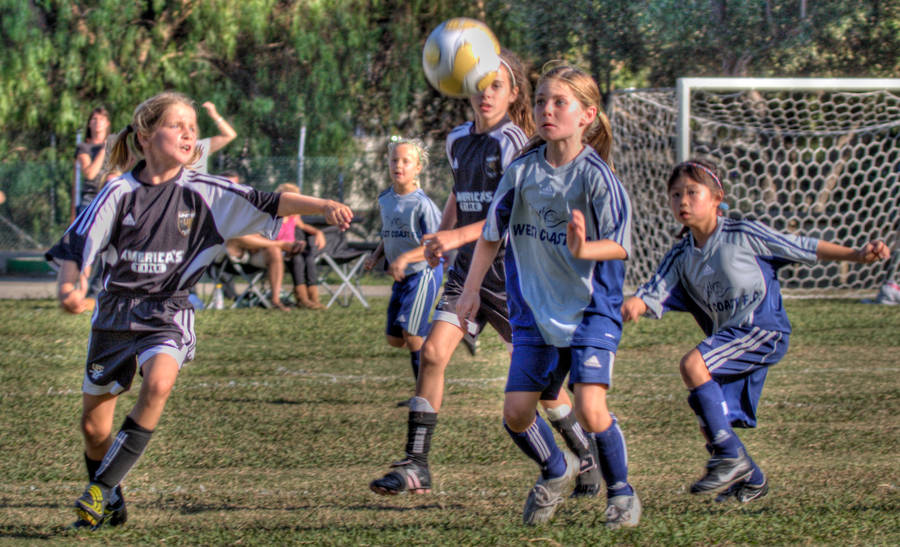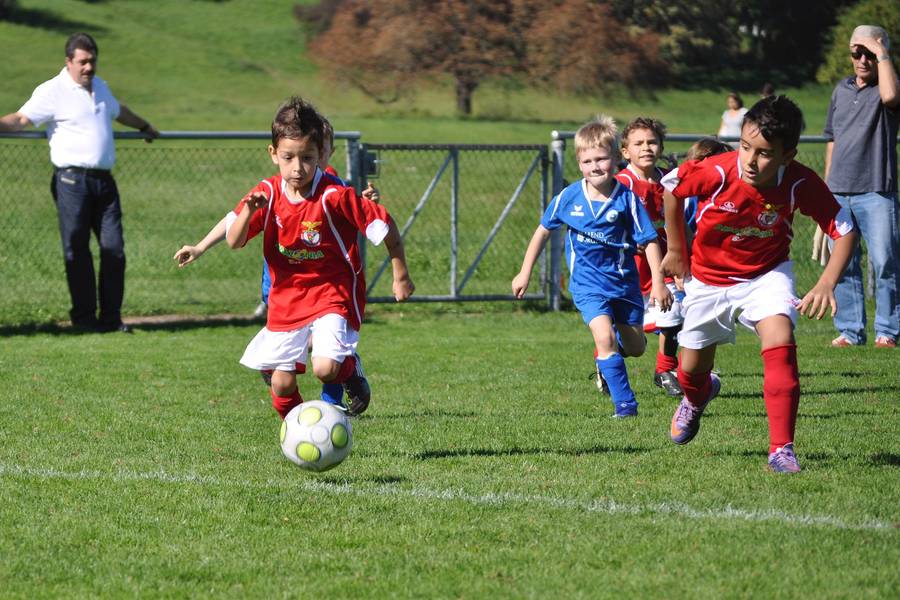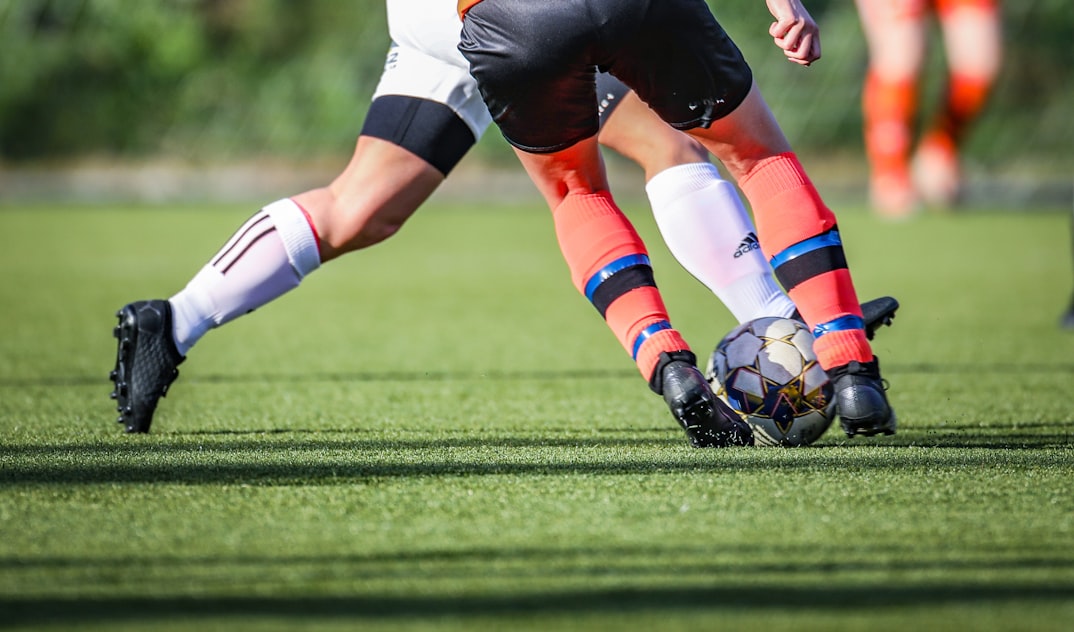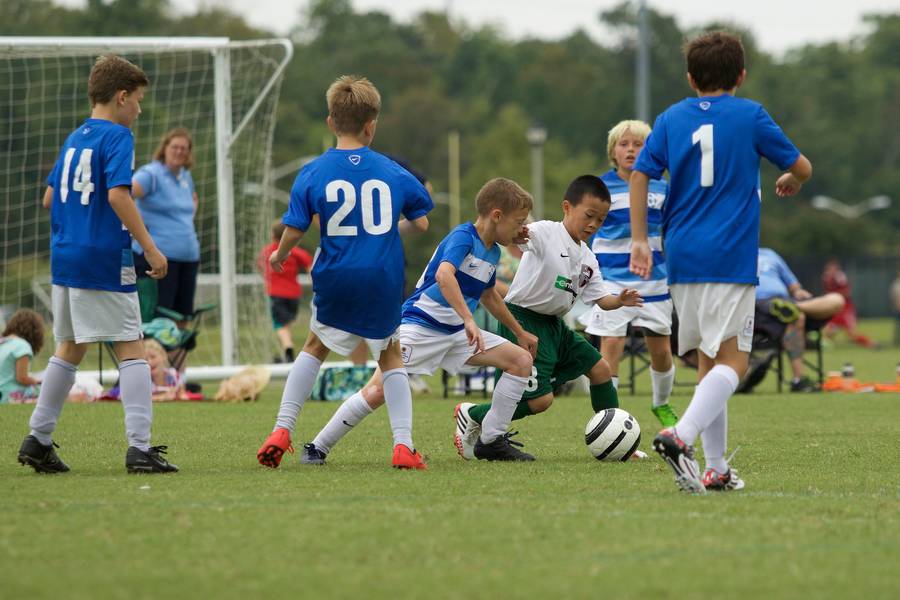
Nothing gives me greater pleasure in football than seeing the development of an individual player.
Watching someone who might have struggled with a particular skill, or in a particular position come through with a ‘moment’ or a strong performance absolutely fills me with joy and pride, especially when it’s something I’ve taken the time to help them with. Although I also find myself questioning if their development is because of my intervention or whether they would have got there by themselves, which usually leads me to the bigger question of just how effective are my training sessions?
Whatever the answer is to that, the truth is they can always be more effective and we all know that creating training sessions that genuinely improve players while keeping them engaged and excited about the game is a big challenge. Having spent many years coaching at grassroots level and observing hundreds of sessions across different age groups, I've tried to identify key principles that separate truly effective sessions from those that merely fill time.
The first principle lies in thoughtful planning. The most successful grassroots coaches arrive with a clear vision of what they want to achieve. This doesn't mean rigid, inflexible plans, in fact it probably means the opposite. It means understanding your players' current abilities and challenges well enough to design sessions that address specific needs. Too often, coaches fall into the trap of recycling the same drills week after week or, conversely, jumping between disconnected activities based on what looked interesting on YouTube that week. Instead, effective sessions build on previous learning while introducing appropriate new challenges. A simple session planner that includes your objectives, key coaching points and progression options takes just five minutes to complete but dramatically increases session effectiveness.
Connection to match play stands as perhaps the most crucial element of effective training. Football is fundamentally a game of decisions made under pressure, yet many grassroots sessions remove these vital elements, focusing instead on isolated technical repetition. While mastering technique certainly matters and as the old saying goes ‘repetition is the Mother of skill,’ players develop most rapidly when practising in contexts that resemble actual match situations. This doesn't mean every session should be exclusively game based, but it does mean that even focused technical work should include elements of decision making, pressure, and direction. For example, rather than practising passing in static pairs, create scenarios where passes must be made to specific targets based on positioning, with gradual introduction of time constraints or pressure from opposition.
The concept of "representative learning design" from sports science research provides a valuable framework here. This approach suggests that practice activities should represent the performance environment in which skills will ultimately be used. When designing drills, consider whether they include the perceptual cues, decision making demands and emotional context players will experience in matches. A shooting drill where players face an empty goal after receiving a perfect pass bears little resemblance to match reality, where they might need to create space, take a touch under pressure and finish with defenders closing down. Adding these elements transforms technical practice into true skill development.
Space management represents another critical factor in session effectiveness. The dimensions used for activities significantly impact the skills being developed. Many grassroots coaches default to arbitrary space allocations without considering their purpose. As a rule of thumb, smaller spaces increase technical demands and defensive pressure, while larger spaces emphasise movement, vision and cardiovascular fitness. When working on tight ball control and quick decision making, spaces might be deliberately constrained. Conversely, when focusing on switching play or exploiting
wide areas, larger zones become necessary. The FA's "STEP" framework (Space, Task, Equipment, People) provides a useful tool for manipulating these variables to achieve specific objectives.
Player involvement stands as a non-negotiable element of effective sessions. Nothing kills enthusiasm faster than standing in queues waiting for ‘turns’ and young players in particular will just wander off task. The ‘golden rule’ of grassroots coaching is maximising active participation, ideally all players should be engaged in meaningful activity for at least 70% of session time as a minimum. This often means using multiple smaller activities running simultaneously rather than one centralised practice. Four groups of five players working in separate grids will get dramatically more touches and decisions than twenty players rotating through a single exercise. Yes, this requires more planning, potentially more equipment and definitely more oversight but the developmental benefits are enormous.
The communication style employed during sessions profoundly affects their impact. The most effective grassroots coaches have moved beyond the traditional "command and control" approach where the coach does most of the talking. Instead, they create environments where players learn through guided discovery. This doesn't mean abandoning instruction entirely, but rather balancing telling with asking. Questions like "What options did you have in that situation?" or "How could we create more space next time?" engage players' problem solving abilities, leading to deeper understanding and better retention. Research consistently shows that knowledge acquired through self discovery sticks far better than information passively received.
Coaching positions also matter more than many realise. Effective coaches move purposefully throughout sessions, adjusting their location based on what they need to observe or influence.
Standing in one spot or following the ball limits your ability to see the full picture and connect with all players. Consider using "scanning stops" where you pause briefly to observe the entire practice before moving again. This allows you to notice patterns, identify players who might need support and maintain awareness of engagement levels across the group.
Differentiation represents perhaps the greatest challenge in grassroots environments, where mixed ability levels are the norm rather than the exception. The most effective coaches neither teach to the middle (boring advanced players while overwhelming beginners) nor split groups rigidly by ability (which can dampen confidence and limit peer learning). Instead, they design practices with built in differentiation, where the same basic activity can be experienced at multiple challenge levels. For example in possession practices, some players might focus simply on maintaining possession while others are tasked with achieving specific pass counts or patterns. Tasks can be adapted for individuals without drawing attention to these adjustments.
The pace and rhythm of sessions significantly impact their effectiveness. Many grassroots sessions suffer from excessive stoppage time, with frequent and lengthy explanations from the coach disrupting flow and reducing active learning time. Aim for smooth transitions between activities, clear, concise instructions (demonstrating rather than explaining where possible) and an overall session tempo that maintains engagement. Think of your session as having a natural rhythm with periods of intensity followed by appropriate recovery, moments of focused instruction balanced with exploration and play.
Player feedback mechanisms offer another opportunity to enhance effectiveness. While immediate coach feedback has its place, overreliance on external feedback prevents players from developing their own levels of performance evaluation. Periodically ask players to rate their own performance on specific aspects or have them briefly discuss in pairs what worked well or needs improvement.
This not only develops self assessment skills but also increases ownership of the learning process.
These moments of reflection needn't be lengthy, even a 30 seconds period of targeted self evaluation can significantly enhance learning.
The emotional climate of sessions powerfully influences both performance and learning. Players who feel safe to try things without fear of criticism learn more quickly and enjoy the process more deeply. This doesn't mean avoiding correction, but rather framing feedback constructively and maintaining a positive approach focused on effort and improvement rather than outcomes alone.
Research from sports psychology consistently shows that ‘mastery climates’ where the focus is on personal improvement produce better long term results than ‘performance climates’ with a sole focus on comparison to others.
Equipment usage presents another opportunity to enhance effectiveness, even with limited resources. Clever use of different coloured cones, bibs or balls can transform simple drills by adding decision making elements or creating constraints that direct learning. Instead of verbally instructing players to ‘pass to the wide players,’ using different coloured bibs for wide players and offering bonus points for finding them shifts the instruction from explicit to implicit, embedding the learning in the activity itself. Similarly, different zones marked with cones can have specific rules attached, creating decision making scenarios without stopping play for lengthy explanations.
Session evaluation completes the effectiveness cycle. The best grassroots coaches reflect systematically on what worked, what didn't work and why. This needn't be time consuming or overly elaborate, even a simple rating of different session components with brief notes about player responses provides valuable information for future planning. Over time, this reflection builds an increasingly refined understanding of what works for your specific players in your context.
Ultimately, the measure of a successful training session is not how many goals are scored in a practice match or how slick the passing drill looks from the touchline. It’s whether the players leave the pitch feeling more confident, more curious and more connected to the game than when they arrived. It is whether they are excited to return, eager to improve and ready to apply what they’ve learned on a match day. Coaching at grassroots level is about building habits, shaping attitudes and sparking a love of the game and your training sessions are where this magic happens.

